Ethiopia |
THE PROPOSAL
The Government of Ethiopia started the development of Integrated Agro-Industrial Parks, or IAIPs, which establishes them across the country and introduces the concept of Agro-Commodity Procurement Zones (ACPZs) to supply the parks. IAIP development is expected to drive the structural transformation of the economy, including modernization of the agricultural sector, by creating permanent linkages between agriculture and industry, fostering improved production and productivity, as well as increasing commercialization of strategic agricultural commodities.
The Hand-in-Hand Initiative supports investments in the
Bulbula ACPZ in Eastern Oromia and the Yirgalem ACPZ in Sidama, areas
that have been identified for having potential for increasing
agricultural production or productivity, commercialization, export, and
import substitution.
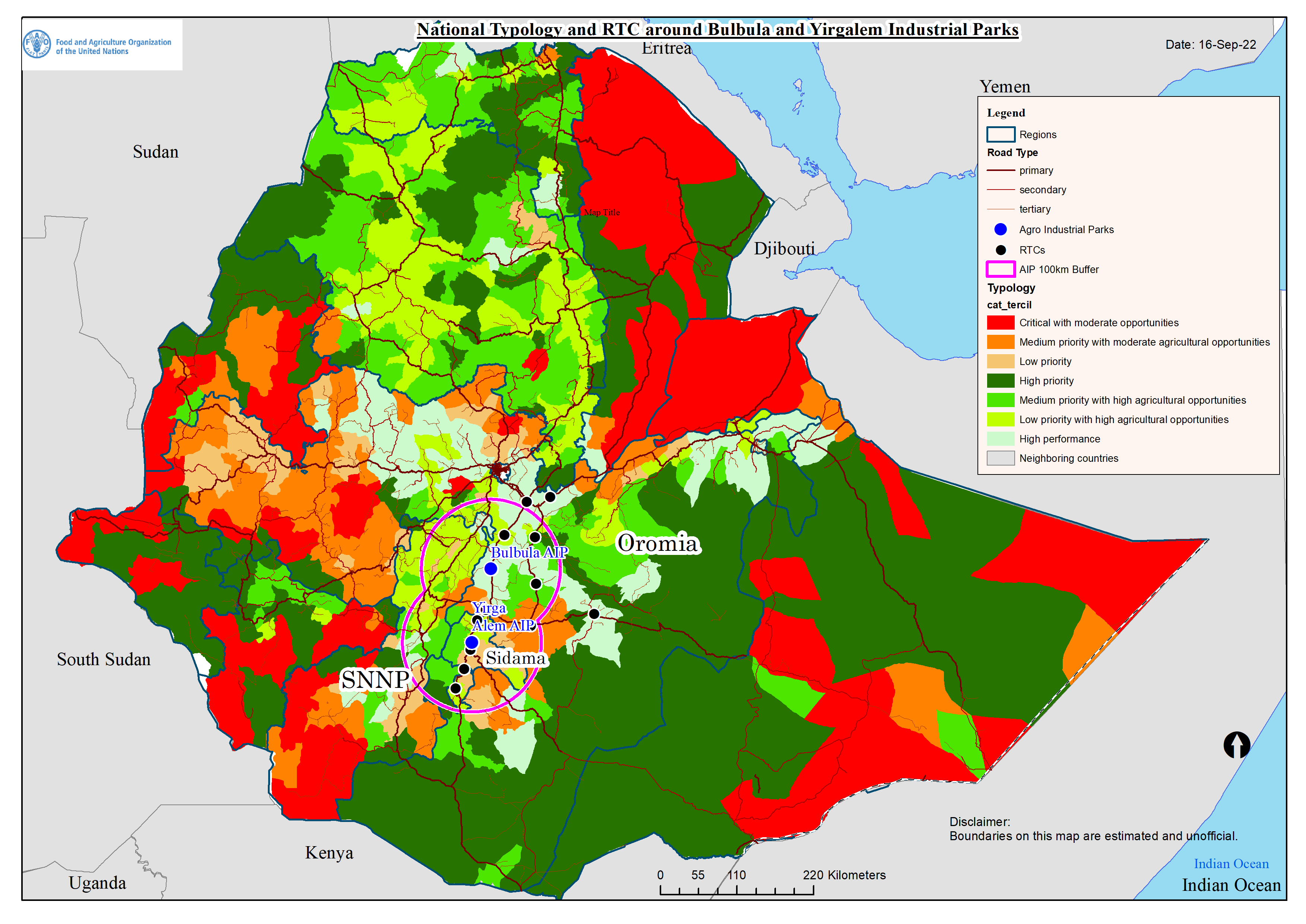
COMMODITIES AND INTERVENTIONS
Wheat
The Government has prioritized investments in wheat in the Bulbula Agro-Commdity Procurement Zones (in East Shoa and West Arsi zones), so that production can meet consumption needs.
Interventions focus on establishing medium-scale organic fertilizer production plants (with annual production capacity of 20,000 tons per plant), improving seed multiplications, and enhancing agricultural machinery industry factories' capacity to produce 8HP walking tractor to be leased to smallholder farmers.
It is expected that this will increase wheat production in Eastern Oromia from 1,896,619 million tonnes per year (mt/y) to 2,673,426 mt/y, with 72% of the products (up from 60%) marketed through formal channels. A potential carbon mitigation impact of -13,270,886 tonnes of CO2 equivalent (tCO2e) over a 20-year-period is expected.
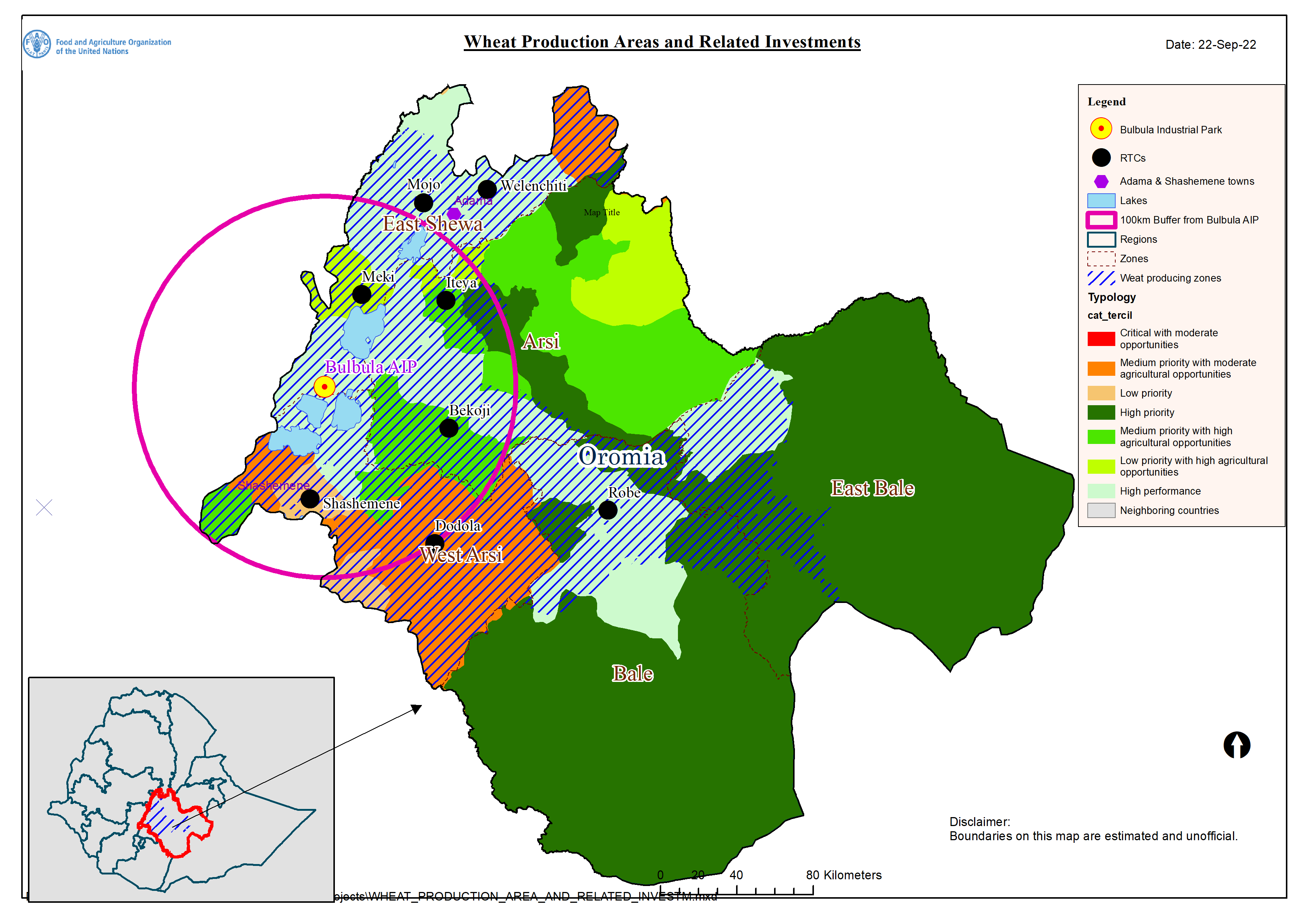
COMMODITIES AND INTERVENTIONS
Dairy
A growing demand of dairy products, low milk yields and limited number of milk collection points have led the Government to prioritize dairy in the Bulbula ACPZ (East Shoa, West Arsi).
Interventions include establishing a compound animal feed factory, building and upgrading collection centers with adequate cooling, testing and transporting facilities, and distributing milk collection equipment to smallholder farmers for 2,346,712 milking cows.
With an investment of approximately US$55,000 per facility, this will lead to an increase of milk production in Eastern Oromia from 329,909 MT/y to 478,421 MT/y. The financial internal rate of return is expected to be 35% and the economic IRR is expected to be 25%.
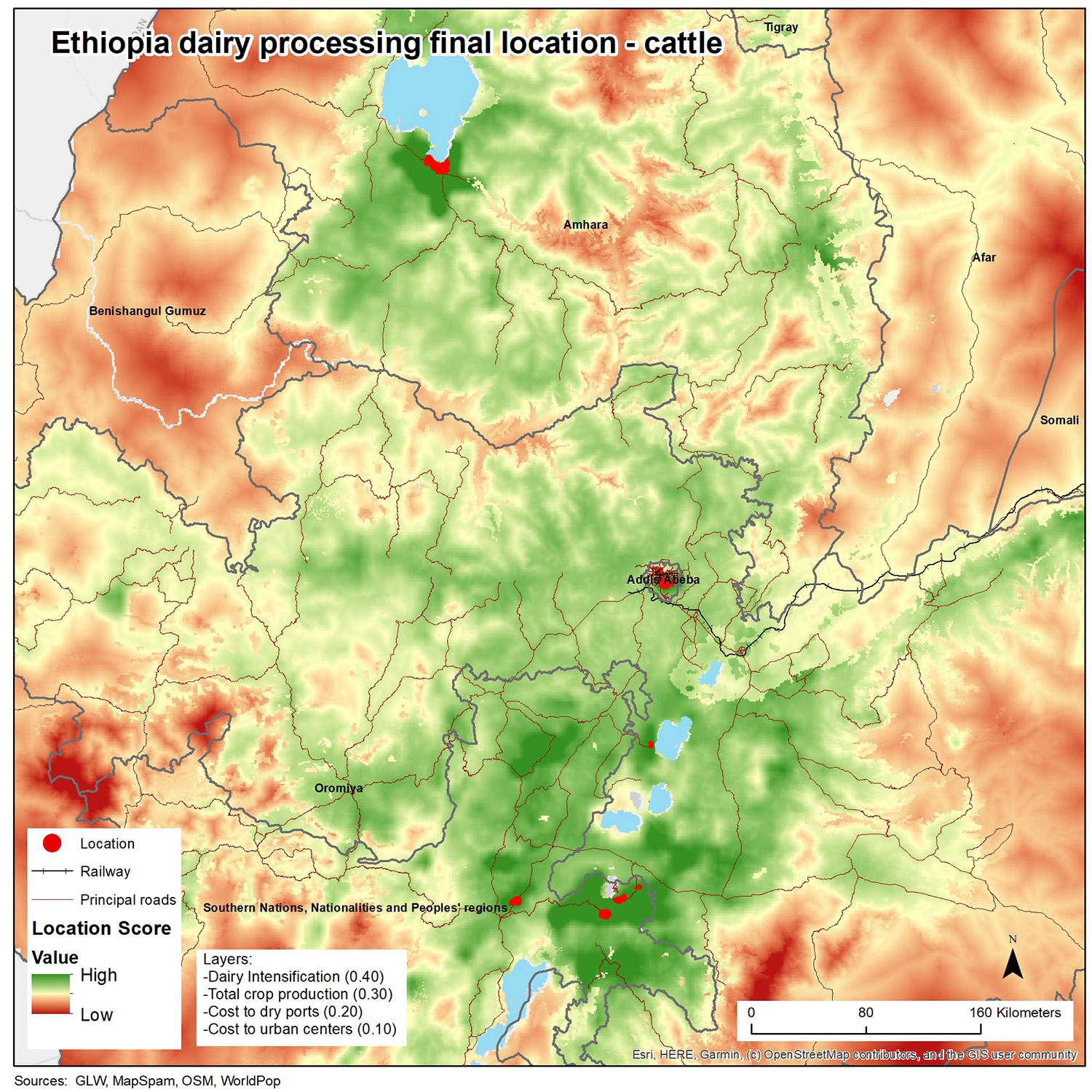
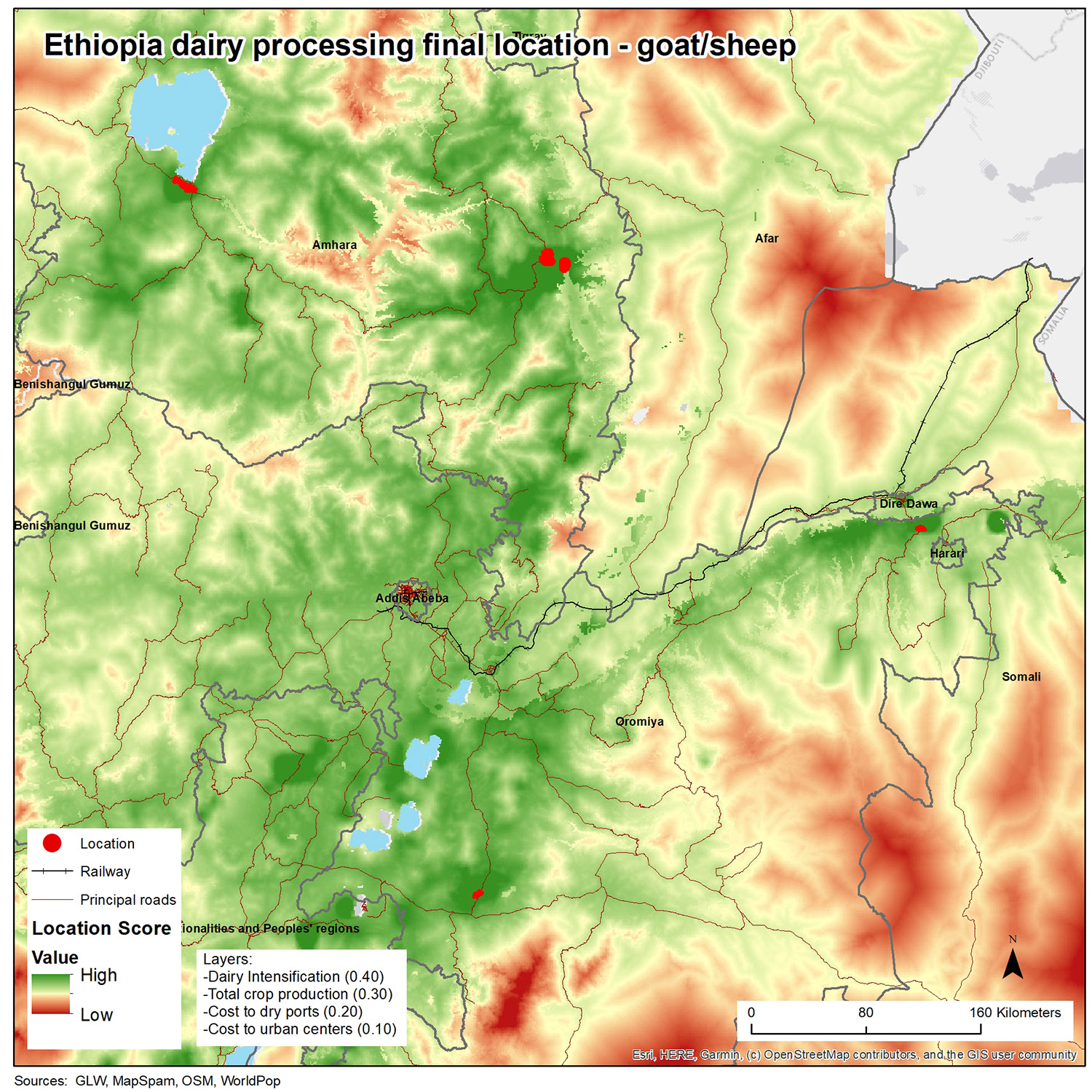
COMMODITIES AND INTERVENTIONS
Coffee
Ethiopia is one of the largest producers and consumers of coffee. However, annual coffee productivity is low. Eighty percent of Ethiopia’s coffee trees need to be stumped to encourage vigorous new growth. And most of the coffee is obtained through the wet processing method.
Based on this, the interventions for coffee in the Yirgalem ACPZ focuses on establishing a stumping fund to provide incentives for coffee tree stumping and providing training to coffee farmers on best practices.
For washing coffee beans, two types of models are being considered to boost productivity and add local value. First, a "private wet mill" model for buying and selling coffee cherries to an exporter at Ethiopian Commodity Exchange prices. Second, a "farmers' cooperative wet mill" model to buy coffee cherries and directly exporting green beans at international prices through a cooperative union.
With an expected increase in coffee production from 74,554 mt/y to 410,383 mt/y, about 41,300 farmers could benefit from this efforts. The economic IRR is expected to be 35%.
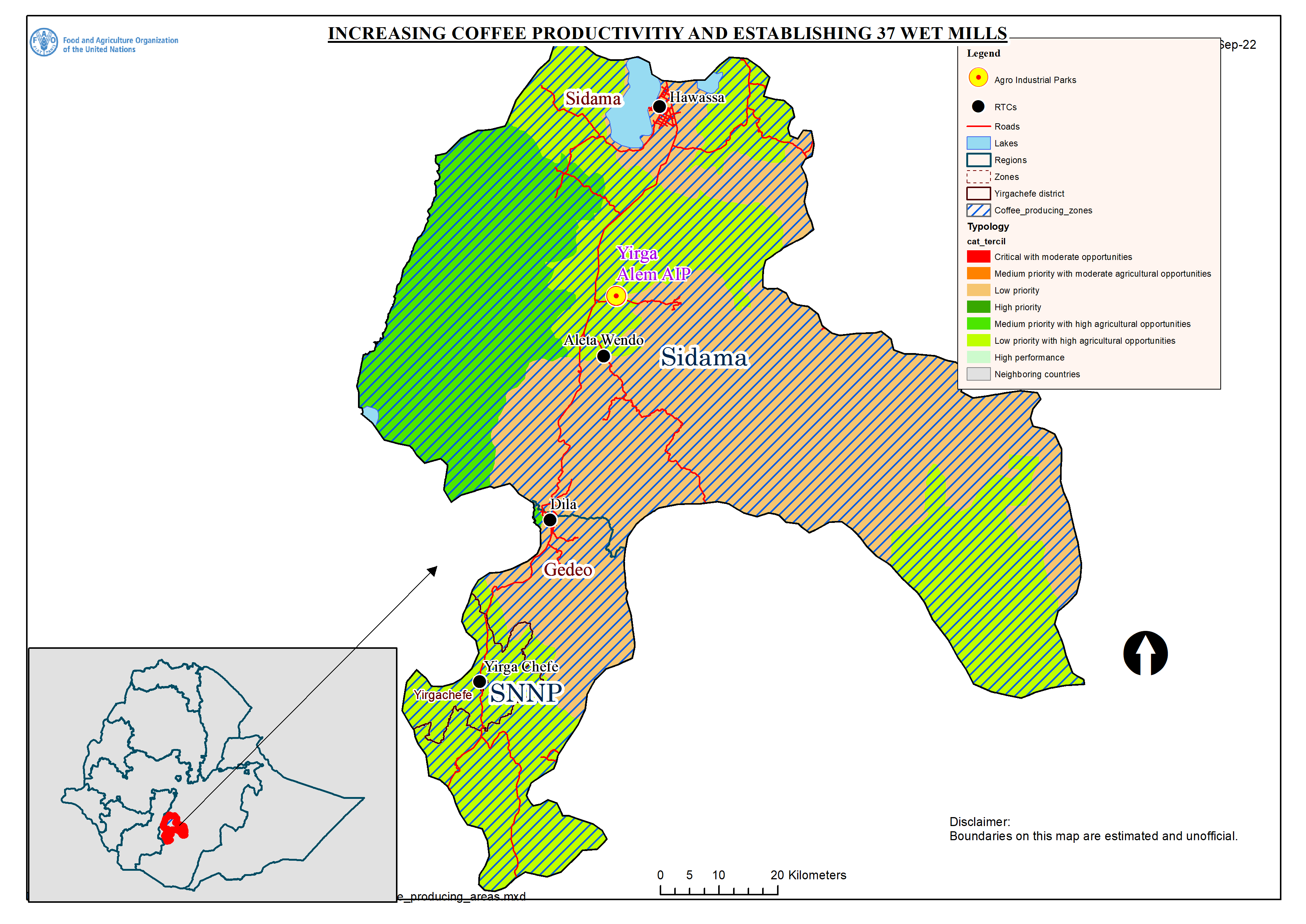
COMMODITIES AND INTERVENTIONS
While domestic demand for the commodity has increased, farmers still lack the means to adequately facilitate cross-pollination, which has led to low yields. That is why in Yirgalem ACPZ has a strategy of establishing a beehive-hiring service and building beekeeping capacity among avocado farmers and cooperatives to enhance cross-pollination of avocado plants.
This is expected to lead to an increase in production from 12,824 to 220,584 metric tons annually by 2025, with 41% of the products (up from 11%) marketed through formal channels.
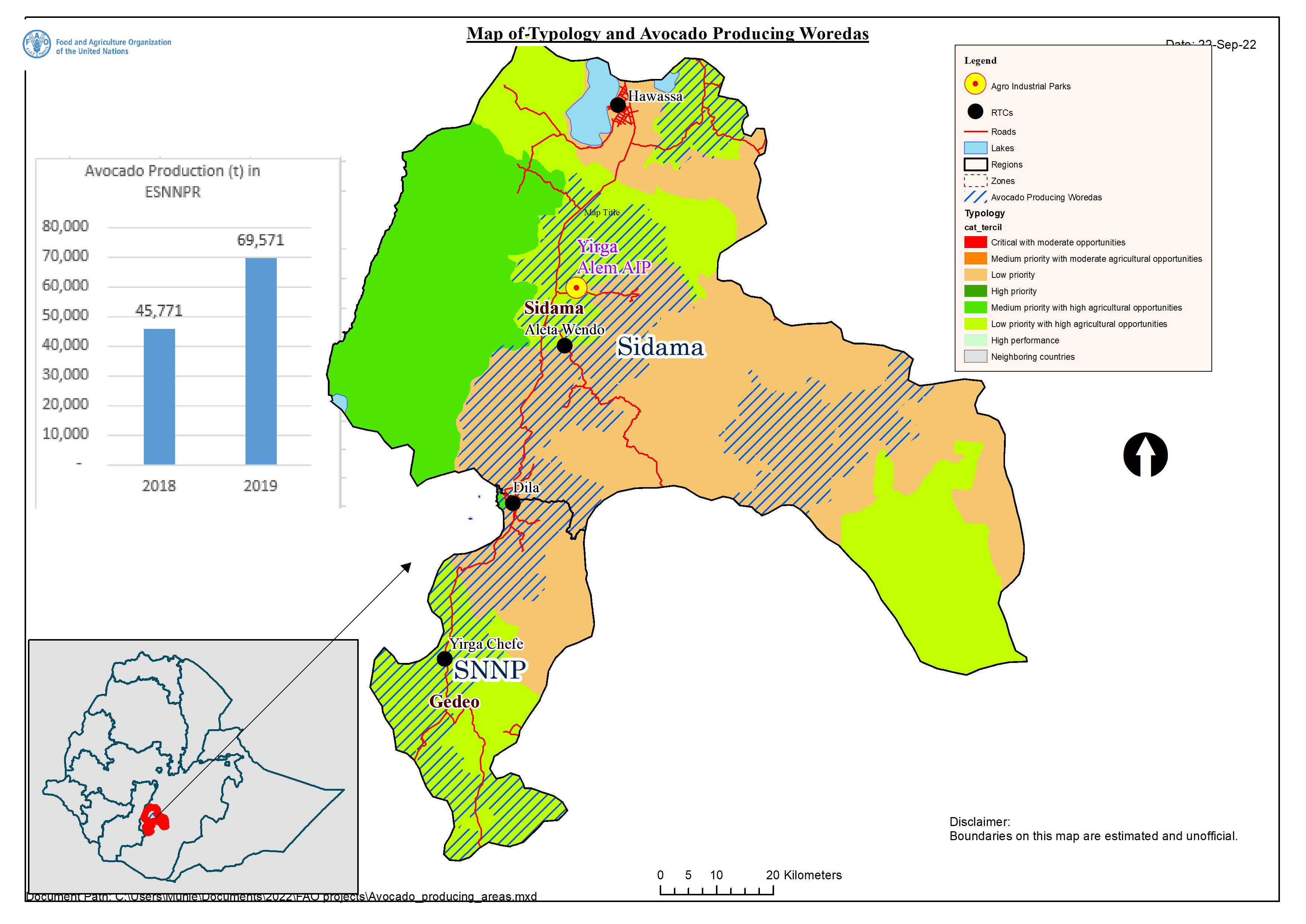
Minister Omer Hussein Oba discusses the HiH Initiative in Ethiopia

